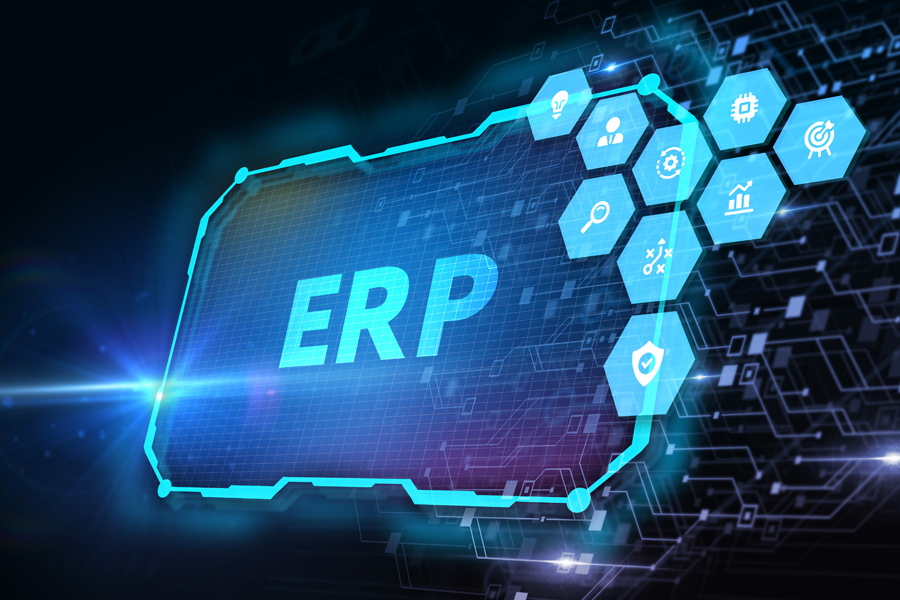
In the era of the fourth industrial revolution, as the legacy systems of enterprises become more complex and the data becomes vast, there are many cases in which ERP systems are introduced, not only in manufacturing, but also in every other field, such as machinery, construction, finance, and the public sector.
In addition, there are a considerable number of legacy systems for performing detailed tasks in specific fields other than the company's ERP system. These systems are used to perform various tasks, such as inventory management, purchase management, production management, accounting management, supply chain management, financial and cost management, and business management.
However, work inefficiency may occur due to the duplication of commonly used master data, inconsistencies between systems, poor data quality, etc., and inaccurate reports may cause analysis errors. To increase the speed, accuracy and efficiency of these tasks, the single view management of company-wide master data is essentially required.
In this regard, this column is focused on companies that have introduced the ERP system (SAP ERP) or are considering introducing it. For companies before introducing the master data management (MDM) system, this column aims to describe a method that can be applied when introducing the MDM function as a module concept, such as MM, FI, CO, and PM in ERP.
What is ERP Bolt-On MDM?

- ERP
- ERP master data
- -> / ->
- Legacy system
- MIS / MIS
- 1
- MDM Package
- Facilities, materials, products, clients, organizations, etc
- -> / ->
- ERP system, legacy system
- ERP master data->
- MIS / MIS
- 2
- ERP
- Bolt-on MDM : Facilities, materials, products, clients, organizations, etc ->
- ERP master data
- -> / ->
- Legacy system
- MIS / MIS
- 3
If only the ERP system is introduced without a system that performs the master data management (MDM) function, the master data registration and change is performed by utilizing ERP’s own standard functions (authority management, master data input UI) for ERP master data, such as material master, facility master, GL account, and vendor master within the ERP system, as shown in ① of [Figure 1], and it is common to distribute master data to relevant legacy systems.
A company that introduced the MDM system as a package registers and manages the master data commonly used in the ERP and legacy system in a separate MDM system, as shown in ② of [Figure 1], and distributes it to the ERP and legacy system.
As shown in ③ of [Figure 1], if the function for managing the master data in the ERP system without a separate MDM Package is developed as a Customer Bolt-On (CBO) program, the company-wide master data is managed through the corresponding master data management function. It is responsible for reflecting the master data in the standard master data table for ERP tasks and distributing it to the legacy system. The function implemented in this way can be regarded as an ERP Bolt-On MDM.
In detail, the ERP Bolt-On MDM can be thought of as one master data management module, such as MM, PM, and FI/CO within the ERP as shown in the [Figure 2] below. It is a master data management function implemented as CBO in the ERP system by utilizing the functions used in the ERP system, including the company-wide linkage of functions, such as the e-mail system, EAI system, and approval system, and authority management embedded in the ERP, Workflow function, HANA DB-based data model management, ABAP program for user UI and Logic processing, etc.

- Company-wide system functions: E-mail system, EAI system, approval system, etc ->
- ERP common functions: Permission management, workflow management, HANA DB, ABAP program, etc ->
- CBO Process
- Business rule application
- Validation ->
- Governance
- Search > (Registration request > Review > Registration Approval) -
- ->
- - Duplication verification
- User UI
- CBO Table
- Material master
- Facility master
- Cost Center
- ...
- Legacy utilization master data
- -> Distribution
- -> Reflection
- CBO Table
- Material master
- Facility master
- Cost Center
- ...
- Distribution
- MIS 1
- MIS 2
- ...
- MES ..
Implementation procedure of ERP Bolt-On MDM
The same methodology applies to typical ERP or Package MDM applications.

- AS-Is analysis / To-Be design / Development of the master data management system, Maintenance of master data / Integrated test, Data transfer / Application, Stabilization
(1) As-Is analysis: Analysis of organizations, operating standards, and systems related to master data
(2) To-Be design: To-Be system design considering the criteria for managing the company-wide master data in the future and the functions applied and used in ERP
(3) Development of the master data management system: Development of the Bolt-On MDM based on the ERP development methodology
(4) Maintenance of master data: Maintenance of master data for management based on the To-Be standard system
(5) Integrated test: Test execution by reflecting the data maintained in the developed system
(6) Data transfer: Data reflection on the CBO tables for MDM, the standard table for ERP tasks, and related tables in the legacy system for operation of the maintained data
(7) Application and stabilization: Support for stable operation of Bolt-On MDM, handover
Developing ERP Bolt-On MDM means analyzing, designing, and developing the functions of MDM Packages, considering what processes are required for managing master data in a company, what functions are needed, how to complete the standardization, what functions in ERP should be used, and what functions need to be developed by CBO other than the ERP standard function.
Comparison between Package MDM and ERP Bolt-On MDM
The comparison between the Package MDM and ERP Bolt-On MDM is as follows
(1) Data modeling perspective
◎ Package MDM: Basically, it provides modeling for key master data. It is possible to model the master data necessary for the company by modeling with additional attributes, Add and CBO
◎ ERP Bolt-On MDM: This models in the ABAP Dictionary in the same way as it models in ERP development, making it easy for ERP operators to model
(2) Lifecycle management process perspective
◎ Package MDM: This defines the master data management process by configuration
◎ ERP Bolt-On MDM: This is developed based on ABAP
(3) Master data UI perspective
◎ Package MDM: Basically, it provides a screen UI for key master data, and it is possible to add necessary attributes and quality inspection rules with CBO
◎ ERP Bolt-On MDM: This develops the ABAP-based UI and quality inspection rules, just like ERP, making it easy for ERP operators to maintain them
(4) Master data distribution perspective
◎ Package MDM: This develops the master data distribution through the EAI system
◎ ERP Bolt-On MDM: This develops the master data distribution through the EAI system
Epilogue
Implementing the MDM function with Customer Bolt-On within ERP is done by using MDM in the same way as the ERP utilization function, so users (employees) will be familiar with the screen and functions.
In addition, UI, function, interface, workflow, and data model (database table) are developed in the same way as ERP from the perspective of system operators, so even the existing ERP system operators can easily operate the master data management function.
Considering these points, it would be a good choice for companies that plan to introduce an ERP system or have introduced an ERP system but not an MDM system to consider implementing and utilizing ERP Bolt-On MDM.
▶ The content is protected by the copyright law and the copyright belongs to the author.
▶ The content is prohibited to copy or quote without the author's permission.

Data Consulting Team, Consulting Business Unit, S-Core Co., Ltd.
He is an expert in establishing SAP and ERP-based master data management systems in industries, such as public, construction, machinery, finance, electronics, etc., with more than 20 years of know-how.
